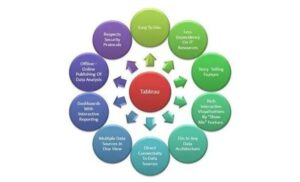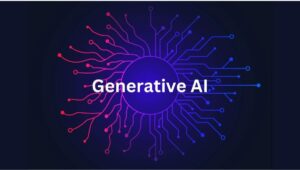Introduction
Embarking on a Data Analytics project can be a transformative journey for your company, but it requires careful planning and strategic decision-making. Here are some key points to consider to ensure your project’s success:
Define and Prioritize Your Scope

Firstly, carefully evaluate the scope of your analytics project. Determine what areas need immediate attention—whether it’s financial reporting, supply chain analysis, order-to-cash processes, or HR reporting. By prioritizing these elements, you will help focus your efforts and resources effectively. Conducting stakeholder interviews will further enhance your understanding of critical pain points and expectations. Consequently, use these insights to align your project goals with organizational objectives, ensuring that the most impactful areas are addressed first. Additionally, creating a scope statement and a project charter will guide your team in maintaining focus and avoiding scope creep.
Avoid the Big Bang Approach

Moreover, going for a big bang implementation can quickly turn into a big bust. Instead, adopt an agile approach by breaking down the project into manageable parts. For instance, leverage the SAP Activate methodology and utilize pre-delivered artifacts like project plans to streamline your process. Start with a pilot phase to test key components and gather feedback. This iterative approach allows you to make incremental improvements and adapt to changing requirements. Regular sprint reviews and retrospectives will help ensure that each phase delivers value and aligns with stakeholder expectations.
Manage Your Data Wisely

Additionally, analyze the relevance of your data and categorize it into warm, cold, and hot data. This practice can significantly reduce hardware and storage costs. Utilize data archiving options to ensure efficient data management. Begin by conducting a data audit to understand current data usage and storage needs. Use this audit to create a data governance framework that outlines how data should be classified and managed. Ultimately, implementing data archiving and purging strategies will ensure that only relevant data is actively stored and processed.
Consider Cloud-Based Solutions for Data Analytics

Furthermore, transition to cloud-based data warehousing solutions like SAP Datasphere. Employ SAP Analytics Cloud for building dashboards, reports, and planning. This shift can help you save on infrastructure costs by reducing the need for maintaining multiple instances of traditional systems like BW, BusinessObjects, BPC, or even Hyperion. Assess your current IT landscape and future growth plans to determine the optimal cloud solution for your needs. Collaborating with cloud vendors will ensure a seamless transition and establish robust data security protocols. Emphasize scalability and flexibility to support evolving business requirements.
Plan for a Long-Term SAP Strategy
In addition, avoid using non-homogeneous landscapes with non-SAP tools like Anaplan or Hyperion. A unified SAP strategy can save you from the complexities of long-running data integration projects and ensure smoother operations. Start by evaluating your current technology stack and identifying areas for consolidation. Subsequently, develop a long-term roadmap that outlines your SAP strategy and aligns with business objectives. This roadmap should also consider future-proofing your architecture by adopting emerging technologies and best practices.
Leverage Modern Integration Tools

Also, use SAP’s Integration Suite for data integration instead of legacy tools like PI/PO or third-party options like Boomi. If transitioning from these tools, consider your specific use case and dependencies. This transition is ideal as part of a broader digital transformation, such as an S/4HANA migration. Conducting a gap analysis will help identify the capabilities of your existing integration tools and areas for improvement. Engage with integration specialists to design and implement a seamless integration strategy that enhances data flow and visibility across your organization.
Simplify Your Toolset

Moreover, in large organizations, having too many tools can create confusion. Therefore, aim for a leaner architecture with a single tool across the enterprise, ensuring consistency and ease of use for all group companies. Conduct a tool audit to identify redundancies and overlaps in functionality. Involve stakeholders from various departments to gather insights on tool usage and requirements. Consequently, develop a standardization policy that promotes the use of approved tools and encourages cross-functional collaboration. This simplification will enhance user adoption and reduce maintenance overhead.
Opt for Simple Solutions
Additionally, seek out straightforward solutions rather than overcomplicating processes. Consider the long-term scalability and potential for enhancements. Simplicity should always be a priority for solution architects. Engage with end-users and stakeholders to understand their needs and preferences. Use this information to design intuitive interfaces and workflows that minimize complexity. Adopting a user-centered design approach will ensure that your solutions are user-friendly and align with business goals.
Right-Size Your Infrastructure
Examine your data volume and growth trajectory to make informed decisions about hardware sizing. Proper planning can prevent costly adjustments later on. Analyze historical data trends and project future growth scenarios to develop a comprehensive hardware sizing strategy. Engage with IT and infrastructure teams to design a scalable architecture that supports current and future demands. Implementing performance monitoring and optimization practices will ensure efficient resource utilization and cost management.
Embrace Generative AI in Data Analytics

Lastly, incorporate generative AI use cases to enhance user experience. With features like “Just Ask” and “Joule” in SAP Analytics Cloud, your CFO can easily access insights, making complex data interactions as simple as brewing a cup of coffee. Explore potential AI applications within your organization to identify areas where AI can add value. Collaborate with AI experts to develop and implement AI-driven solutions that enhance decision-making and automate routine tasks. Foster a culture of innovation by encouraging employees to experiment with AI tools and techniques.
Conclusion
With our extensive experience in analytics projects, we’ve encountered numerous challenges across different contexts. These insights aim to guide you through your own data analytics journey, ensuring you avoid common pitfalls and achieve your strategic goals. By focusing on scope, simplicity, and strategic integration, you can navigate the complexities of your analytics project with confidence.
All the best with your analytics project! Feel free to reach out for more insights or share your experiences. Let’s make your data work smarter, not harder.
Disclaimer: The views expressed here are based on our experience with data analytics projects. We do not specifically endorse or reject any particular tools. It is important to conduct due diligence before selecting any tools for your project.
Moreover, you can check our video blog also- SAP Analytics CLoud – Overview
Similarly, to read more of our blogs surely click here.
